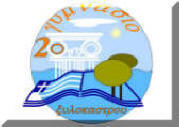


THE GREEK EDUCATIONAL SYSTEM
The Greek Constitution states in the 16th article: Education is the Stateís major concern and has as its aim the moral, mental, professional and physical education of Greek people, the development of their national and religious consciousness so that they become independent and responsible citizens. All Greeks have the right of receiving free education regarding all levels of education in state educational institutions. The State supports students who excel as well as those who are in need of its assistance or special protection, depending on their skills.
LEVELS OF EDUCATION N.1566/85
Ń. PRIMARY EDUCATION
¬. SECONDARY EDUCATION
√. TERTIARY EDUCATION
Primary education level can be divided into Pre-School Education which is offered by Kindergartens and Compulsory Primary Education which is offered by Primary Schools.
Secondary Education is available in two cycles, Compulsory Lower Level Secondary Education offered at Gymnasiums and Post-compulsory, Upper Secondary Education which is offered by the General, Ecclesiastical, Technical Vocational, Unified Multisectoral Lyceums and Technical Educational Institutes.
Tertiary
Education is divided into University education available from
Universities
(AEI),
Higher Technological Educational
Institutes
(TEI) and the Greek Open University.
Attendance in Primary and Lower Secondary Education is compulsory on condition
that students havenít exceeded 16 years of age.
Students of both sexes attend Primary and Secondary Education schools.
Textbooks are available for free to students in all levels of Education.
Expenses for the operation of schools are covered by government grants made available to the local administration which has the responsibility to manage such expenditure.
Additionally the State covers the travel expenses of students.
THE AIMS OF EDUCATION
The primary aim of both Primary and Secondary education is to enhance the balanced mental and physical development of the students so that, irrespectively of their sex and descent, they have the opportunity to develop into congruous personalities and lead a creative life.
Key factors for the achievement of the above mentioned aims are:
Š. the personality and the training of the educational staff in all levels of education.
b. the curricula, textbooks, teaching resources and their use.
c. the existence of all preconditions and means necessary for the unimpeded operation of schools.
d. the development of balanced interpersonal relationships not only at school but also in class as well as treating studentís varied personalities with respect.
3. The curriculum framework greatly assists educators in the following ways:
a. It includes a set of general and more specified aims according to the level of education.
b. It determines the curriculum according to each subjectís aims.
c. It provides guidelines concerning the teaching method and means.
b. The curriculum framework is tested, evaluated and reassessed continuously in accordance with developments in the educational and knowledge field as well as the social needs.
c. The curricula of compulsory education have coherence and uniform analysis of their contents.
d. Textbooks and teachersí books are written according to the curricula.
4. The language of teaching is Modern Greek as formed by the Greek people and current literature without the identical transfer of foreign words.
Here you can see the plan of the structure of the Greek Educational System